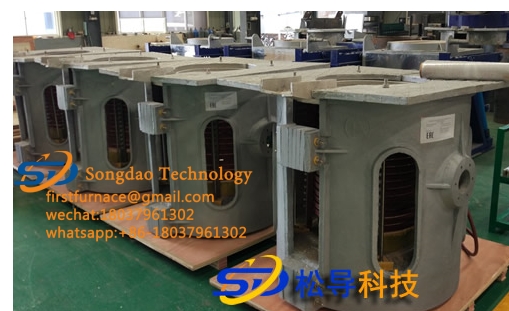- 21
- Nov
Solution to sticky slag on the inner lining of induction furnace
Solution to sticky slag on the inner lining of induction furnace
1. Mechanical breaking method
The so-called mechanical breaking method is to use mechanical means, such as shovels, iron rods, etc., to scrape off the slag on the furnace lining after the slag on the furnace lining appears. The mechanical breaking method makes the sticky slag on the furnace lining easy to scrape, and often increases the melting temperature, so that the sticky slag becomes soft and easy to remove. But it will increase additional power consumption, and high temperature will cause damage to the furnace lining and affect the service life. When workers scrape the slag, in order to ensure safe operation, they will reduce the power of the electric furnace, and the reduction of the power of the electric furnace will lead to a decrease in electrical efficiency, which essentially leads to an increase in smelting power consumption.
2. Chemical breaking method
The so-called chemical destruction method is completely different from the mechanical destruction method. According to the principle of slag formation, the formation mechanism of sticky slag is changed to fundamentally eliminate the possibility of sticky slag on the furnace lining. If the solidification temperature of the slag is lower than the temperature of the furnace lining, even if the slag contacts the furnace lining during the floating process, the temperature of the furnace lining will not drop below its solidification temperature, so as to prevent the slag from solidifying on the furnace wall to form sticky slag.
The chemical breaking method uses this principle to change the physical and chemical properties of the slag and lower its melting point by adding some additives. In the past, fluorite was commonly used as a solvent to lower the melting point of the slag, but the effect of using fluorite alone was not obvious, and it would cause corrosion of the furnace lining. Improper use would worsen the life of the furnace lining.
3. Prevent slag accumulation
When necessary, samples are taken for chemical analysis and microstructure and mineral phase analysis. It is easier to prevent slag accumulation than to remove slag. If a flux is used, it may damage the refractory lining and accelerate the corrosion reaction of the lining. If it is not easy to remove the slag on the liquid surface of the low molten iron, the molten iron can be cleaned out and used for slag removal in the ladle.
The above is the answer to the problem of how to deal with the sticky slag on the furnace wall lining of the induction furnace. If no measures are taken, the slag on the furnace wall will become thicker and thicker, the furnace capacity of the induction furnace will become smaller and smaller, and at the same time smelting Efficiency will also drop, causing serious consequences.

